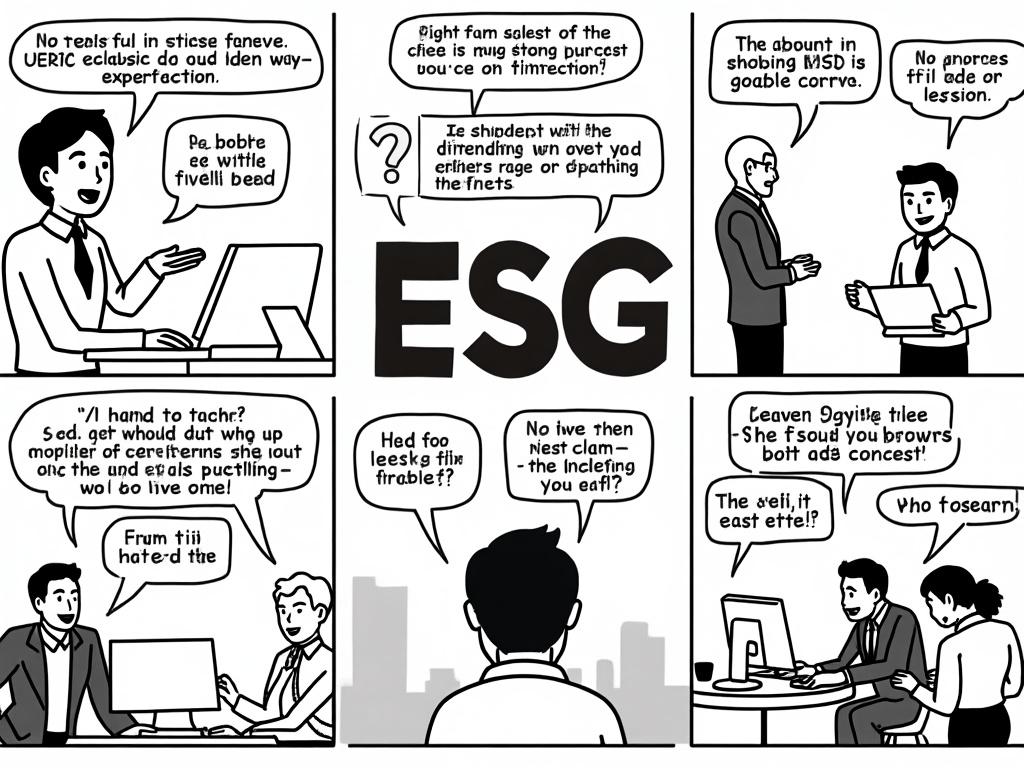
ESG Investing Explained: What Are Environmental, Social, and Governance Criteria?
Reading time: 8 minutes
Ever wondered why trillion-dollar asset managers are suddenly talking about saving the planet while maximizing returns? You’re witnessing the ESG revolution—and it’s reshaping how we think about investing forever.
Table of Contents
- What Is ESG Investing Really About?
- The Three Pillars Decoded
- ESG Performance vs. Traditional Returns
- Implementing ESG in Your Portfolio
- Common Pitfalls and How to Avoid Them
- Your ESG Investment Roadmap
- Frequently Asked Questions
What Is ESG Investing Really About?
Let’s cut through the marketing noise. ESG investing isn’t just about feeling good—it’s about recognizing that environmental risks, social dynamics, and governance failures can make or break investment returns in today’s interconnected world.
Here’s the straight talk: Companies ignoring ESG factors face mounting regulatory pressures, consumer boycotts, and operational disruptions that traditional financial analysis often misses. Smart investors are using ESG criteria as a risk management tool that happens to align with sustainable outcomes.
Quick Scenario: Imagine you invested in Volkswagen before their emissions scandal broke in 2015. Traditional metrics looked solid, but poor environmental governance cost shareholders over $30 billion in market value within months. ESG analysis would have flagged governance red flags and environmental compliance risks years earlier.
Why ESG Matters Now More Than Ever
The numbers don’t lie. According to the Global Sustainable Investment Alliance, ESG assets under management reached $35.3 trillion globally in 2020—a 15% increase in just two years. This isn’t a trend; it’s a fundamental shift in how capital flows.
Three key drivers are accelerating ESG adoption:
- Regulatory momentum: The EU’s Sustainable Finance Disclosure Regulation requires detailed ESG reporting
- Climate risks: Physical and transition risks from climate change are becoming material financial factors
- Generational wealth transfer: Millennials control $68 trillion in assets and prioritize sustainable investing
The Three Pillars Decoded
Understanding ESG means mastering its three distinct but interconnected components. Each pillar addresses different risk categories that can impact long-term investment performance.
Environmental Criteria: Beyond Carbon Footprints
Environmental factors examine how companies interact with the natural world. This goes far beyond simple carbon emissions tracking.
Key Environmental Metrics:
- Carbon intensity and emissions reduction targets
- Water usage efficiency and pollution prevention
- Waste management and circular economy practices
- Biodiversity impact and land use policies
- Climate change adaptation strategies
Real-World Example: Unilever’s Sustainable Living Plan demonstrates environmental leadership in action. By 2020, they reduced environmental footprint per consumer use by 32% while doubling business size. Their stock outperformed peers by 288% over the past decade, partly attributed to their ESG leadership.
Social Criteria: People-Powered Performance
Social factors evaluate how companies manage relationships with employees, customers, communities, and stakeholders. Strong social practices often correlate with operational excellence and brand resilience.
Critical Social Indicators:
- Employee diversity, equity, and inclusion programs
- Labor practices and human rights standards
- Customer data protection and privacy policies
- Community engagement and local economic impact
- Product safety and quality standards
Governance Criteria: The Foundation of Trust
Governance examines how companies are managed, controlled, and held accountable. Poor governance remains the fastest way to destroy shareholder value.
Governance Essentials:
- Board independence and diversity composition
- Executive compensation alignment with performance
- Audit practices and financial transparency
- Shareholder rights and voting procedures
- Ethics policies and corruption prevention
ESG Performance vs. Traditional Returns
The big question every investor asks: Does ESG investing sacrifice returns for principles? The data reveals a more nuanced reality.
Performance Analysis: Setting Expectations
ESG vs. Traditional Portfolio Performance (5-Year Comparison)
Source: MSCI ESG Research, 2019-2024 data
The evidence suggests ESG leaders don’t just match traditional returns—they often exceed them while demonstrating lower volatility. However, this outperformance isn’t guaranteed and varies significantly by sector and time period.
| ESG Factor | Impact on Returns | Risk Reduction | Time Horizon |
|---|---|---|---|
| Environmental | +0.8% annually | Regulatory/Climate risks | Long-term (5+ years) |
| Social | +0.3% annually | Reputation/Labor risks | Medium-term (3-5 years) |
| Governance | +1.2% annually | Management/Fraud risks | Short-term (1-3 years) |
| Combined ESG | +1.1% annually | Systemic risk reduction | All horizons |
Implementing ESG in Your Portfolio
Ready to integrate ESG into your investment strategy? The key is understanding the different approaches and choosing methods that align with your risk tolerance and values.
ESG Integration Strategies
1. ESG Integration Approach
Incorporate ESG factors into traditional financial analysis without explicit exclusions. This mainstream approach focuses on material ESG risks that could impact returns.
2. Best-in-Class Selection
Invest in companies with the highest ESG scores within each sector. This maintains sector diversification while emphasizing ESG leaders.
3. Thematic Investing
Focus on specific sustainability themes like clean energy, water technology, or healthcare innovation. Higher potential returns but concentrated sector risk.
4. Impact Investing
Target investments generating measurable positive social or environmental impact alongside financial returns. Requires careful impact measurement and verification.
Practical Implementation Steps
Step 1: Define Your ESG Priorities
Not all ESG factors matter equally for every investor. Climate-conscious investors might prioritize environmental criteria, while others focus on governance quality.
Step 2: Choose Your Screening Approach
- Negative screening: Exclude industries like tobacco, weapons, or fossil fuels
- Positive screening: Select companies demonstrating ESG leadership
- Norms-based screening: Exclude companies violating international standards
Step 3: Select Investment Vehicles
ESG ETFs offer instant diversification, while individual stock selection provides greater control. Consider fees, tracking errors, and ESG methodology differences.
Common Pitfalls and How to Avoid Them
ESG investing isn’t without challenges. Understanding these pitfalls helps you make more informed decisions and set realistic expectations.
Challenge 1: Greenwashing and Data Quality
The Problem: Companies may overstate ESG credentials while ESG rating agencies often disagree on scores for the same company.
Solution Strategy:
- Look beyond marketing claims to actual data and third-party verification
- Use multiple ESG data sources rather than relying on single ratings
- Focus on companies with clear, measurable sustainability targets and progress reports
- Prioritize firms with independent board oversight of ESG initiatives
Challenge 2: Performance Expectations
The Problem: ESG investments may underperform during certain market cycles, particularly when commodity or traditional energy stocks surge.
Solution Strategy:
- Maintain long-term investment horizon (minimum 3-5 years)
- Diversify across ESG approaches and asset classes
- Set realistic return expectations based on historical data
- Consider ESG as risk management tool, not just return enhancement
Challenge 3: Limited Investment Universe
The Problem: Strict ESG screening may exclude entire sectors or reduce diversification opportunities.
Solution Strategy:
- Use best-in-class approach rather than absolute exclusions when possible
- Consider transition leaders—companies improving ESG performance rapidly
- Balance ESG criteria with fundamental financial analysis
- Review and adjust screening criteria periodically
Your ESG Investment Roadmap
ESG investing is evolving from niche strategy to mainstream imperative. Here’s your practical roadmap for navigating this transformation successfully.
Immediate Action Steps (Next 30 Days)
- Assess your current portfolio: Use tools like Morningstar’s ESG ratings to evaluate existing holdings
- Define your ESG priorities: Determine which environmental, social, and governance factors matter most to your values and risk tolerance
- Research ESG investment options: Compare ESG ETFs, mutual funds, and individual stock opportunities in your target sectors
- Start small: Allocate 10-20% of new investments to ESG strategies while learning
Medium-Term Strategy (3-6 Months)
- Integrate ESG analysis: Incorporate ESG metrics into your investment research process
- Monitor performance: Track how ESG holdings perform relative to benchmarks and adjust strategies accordingly
- Expand gradually: Increase ESG allocation based on comfort level and performance results
Long-Term Vision (1-3 Years)
The regulatory landscape will continue evolving, with mandatory ESG disclosure becoming standard across major markets. Companies with strong ESG practices will likely command premium valuations as investors increasingly recognize the materiality of sustainability factors.
Key trends to monitor:
- Standardization of ESG reporting frameworks
- Integration of climate risk into financial regulation
- Growth of impact measurement and verification tools
- Evolution of ESG data quality and comparability
The question isn’t whether ESG will become mainstream—it already has. The question is whether you’ll position yourself as an early adopter who benefits from this transformation or play catch-up later.
Frequently Asked Questions
Do ESG investments really perform better than traditional investments?
Historical data shows ESG leaders often outperform with lower volatility, but performance varies by time period and sector. ESG should be viewed primarily as risk management that can enhance returns, not guarantee them. The key is maintaining long-term perspective and proper diversification rather than expecting consistent outperformance in all market conditions.
How can I avoid greenwashing when selecting ESG investments?
Focus on concrete metrics and third-party verification rather than marketing claims. Look for companies with specific, measurable sustainability targets, independent board oversight of ESG initiatives, and consistent reporting using recognized frameworks like GRI or SASB. Use multiple ESG data sources and prioritize transparency over glossy sustainability reports.
What percentage of my portfolio should be allocated to ESG investments?
Start with 10-20% for beginners while learning ESG analysis, then adjust based on performance, comfort level, and investment goals. Many institutional investors now integrate ESG factors across their entire portfolio rather than treating it as separate allocation. The optimal percentage depends on your risk tolerance, values alignment, and belief in ESG’s long-term outperformance potential.

Article reviewed by Alexandros Ioannidis, Senior Wealth Manager | Multi-Asset Portfolio Specialist | Building Customized Investment Solutions for High-Net-Worth Clients, on July 3, 2025
